A Beginners Guide to Using The I-Ching
The I Ching is also known as the Book of Changes. Have you ever wondered how to use the I Ching with coins? Or how to consult the I Ching? Or how find meaning in the I Ching hexagrams? In this video, we explore this fascinating and mysterious oracle. This is the I Ching how to. We consider two approaches: the Divination Approach, and the Psychological Approach.
1. DIVINATION APPROACH: What is divination? The word comes from the Latin “divinare” which means “to foresee, to foretell, or to make prophecy.” It means gaining insight into a question or a problem through connecting with the divine.
And historically, the I Ching has roots in divination, as early as neolithic China. It enjoyed widespread use during the Qin Dynasty between 221 BC to 206 BC, under emperor Qin Shi Huang. This video goes into one method for I Ching divination using three coins.
2. PSYCHOLOGICAL APPROACH: Pioneered by Swiss psychologist Carl Jung; he saw the I Ching as a way to access the symbols and archetypes of the collective unconscious. We can think of the hexagrams as a rich symbolic language; each one expressing a unique state of change that’s universal. We find it in nature, and in every culture in the world. In this video, we also explore some guidelines on forming questions when consulting the I Ching.
There are no hard and fast rules to this. The I Ching is a personal oracle, and the point is to build an authentic and individual connection wit it, that resonates with you.
The I Ching, also known as the Yi Jing, is an ancient Chinese divination text and is among the oldest of the Chinese classics.
ORIGINS: The I Ching was originally a divination manual in the Western Zhou period (1000–750 BC).
MEANING: The name I Ching is usually translated as the "Book of Changes" or "Classic of Changes".
STRUCTURE: The core of the I Ching consists of 64 hexagrams, each composed of six lines. Each line has either a broken or unbroken state, allowing for a total of 64 possible combinations.
USAGE: Over time, it transformed into a cosmological text with a series of philosophical commentaries known as the "Ten Wings". It was used for divination practice for centuries across the Far East and was the subject of scholarly commentary.
INFLUENCE: During the 18th, 19th, and 20th centuries, it played an influential role in Western understanding of East Asian philosophical thought.
DIVINATION METHOD: As a divination text, the I Ching is used for a Chinese form of cleromancy known as I Ching divination. In this method, bundles of yarrow stalks are manipulated to produce sets of six apparently random numbers ranging from 6 to 9.
INTERPRETATION: The interpretation of the readings found in the I Ching has been discussed and debated over the centuries. Many commentators have used the book symbolically, often to provide guidance for moral decision-making, as informed by Confucianism, Taoism, and Buddhism.
TIMESTAMPS:
00:00 - The I Ching Book of Changes: a mysterious and powerful oracle
01:22 - Part One: The Divination Approach to the I Ching
02:13 - How to use the I Ching with coins
05:25 - I Ching hexagrams: Locked and Changing Hexagrams
08:00 - Part Two: A Psychological Approach to the I Ching
09:33 - Some Guidelines for Thinking about I Ching Questions
SOURCE
Modern Intuitionist
-
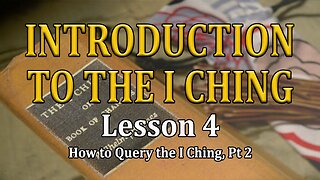 14:27
14:27
Understanding the I Ching
4 months agoUnderstanding the I Ching - lesson 4 - How to Query the I Ching pt. 2
8 -
 14:46
14:46
Understanding the I Ching
4 months agoUnderstanding the I Ching - lesson 4 - How to Query the I Ching pt. 1
11 -
 14:27
14:27
Understanding the I Ching
4 months agoUnderstanding the I Ching - lesson 4 - How to Query the I Ching pt. 3
121 -
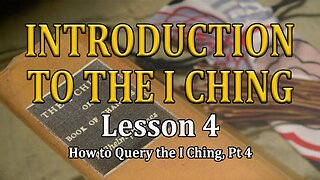 12:40
12:40
Understanding the I Ching
4 months agoUnderstanding the I Ching - lesson 4 - How to Query the I Ching pt. 4
81 -
 1:27:22
1:27:22
serevaya
1 year agoOSHO Talk - Hsin Hsin Ming - The Book Of Nothing - The Great Way Is Not Difficult - 1
256 -
 1:21:34
1:21:34
serevaya
1 year agoOSHO Talk - Hsin Hsin Ming - The Book Of Nothing - To Return to the Root - 4
77 -
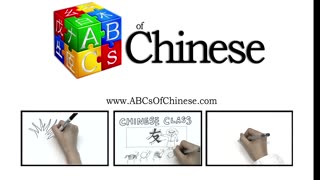 11:02
11:02
la930
1 year agoLearn Chinese for free
12 -
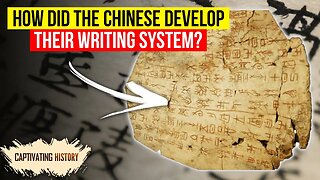 12:30
12:30
Captivating History
1 year agoHow Did the Chinese Develop Their Writing System
18 -
 3:52
3:52
Strange TV
1 year agoThe Master of Wu Ji Qi Gong
312 -
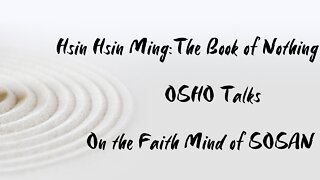 1:32:44
1:32:44
serevaya
1 year agoOSHO Talk - Hsin Hsin Ming - The Book Of Nothing - The Way Is Perfect - 2
60